Which Witch War?
There are two kinds of “witch wars” in the Pagan world, and most of the time, it’s the gossipy, bitchy, war-of-words kind that is the most common. This blog

post isn’t about that – largely because I suck at them. I just don’t have much investment in the kind of social fuckery that allows an actual honest-to-West-Virginia-Jeebus negative social campaign to form. In short, I’m not the droid your looking for when it comes to advice for surviving a social shit storm (but this droid might be helpful, and also this).
I am however, the droid that can give you some helpful tips on the second kind of witch war: the magical kind.
An Evil of Ego
To put it simply, this kind of witch war is usually an utter clusterfuck. Like the social shit storm variety, it usually comes about because one person gets their pants in a twist over some ego-related matter. They can come about quickly, 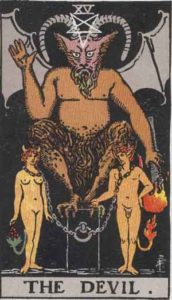 or they sort of ferment over time. In my experience of these slow wars, you usually have about 2-3 years of fermentation punctuated by relatively minor periods of being poked at before hostilities fully escalate.
or they sort of ferment over time. In my experience of these slow wars, you usually have about 2-3 years of fermentation punctuated by relatively minor periods of being poked at before hostilities fully escalate.
The magical witch war can be soul-destroying, and can wreck your whole life in otherwise unbelievable ways. This is especially the case if you take the position that this shit just doesn’t really happen and so are perhaps not as vigilant as you should be. Moreover, if the attack is particularly bad, the aftermath can be quite difficult and take some serious recovery time .
Hands down the best way to deal with this kind of witch war though, is to avoid it in the first place.
But how can you avoid something that hasn’t (hopefully) happened yet? The simple answer is that you can’t. But there are some relatively easy precautions you can take to reduce both access and effectiveness that go beyond the usual wards and shielding.
Reciprocal relationships
One of your most important lines of defense against nastiness, is the reciprocal relationships that you nurture and maintain with your numinous powers. Sometimes it may be gods who help you, and sometimes Fair Folk. However, mostly it’s going to be ancestors and house spirits that do the bulk of the heavy-lifting here, so these are the relationships you really need to cultivate.
of the heavy-lifting here, so these are the relationships you really need to cultivate.
That’s not to say that the gods and Fair Folk wouldn’t get involved though, or that it isn’t worth taking the time to develop reciprocal relationships with them too. It’s just that they have less reason to be involved than the aforementioned groups, and unless there are already signs that you have their favor, their prices tend to be much steeper.
When you have good reciprocal relationships with your ancestors and house spirits, detecting, diagnosing, and dealing with magical attacks become much easier. Because when you have those relationships, you can get a lot done by simply calling to them with some offerings and checking in. I recommend checking in in this way on a weekly basis (at least).
Cleanliness
This is where I tell you to clean your house! No really, regular cleaning is one of the best steps you can take to create a layer of protection from some major whammy.
 You see, sometimes witch wars involve sending asshole spirits to mess with you, and those asshole spirits tend to gravitate to the shitty, cluttered areas of your home like mosquitoes do to buckets of water. (This is pretty much why paranormal teams get people to clean up as part of the solution.)
You see, sometimes witch wars involve sending asshole spirits to mess with you, and those asshole spirits tend to gravitate to the shitty, cluttered areas of your home like mosquitoes do to buckets of water. (This is pretty much why paranormal teams get people to clean up as part of the solution.)
Another reason why cleaning is an important activity (you know, aside from regular old health, hygiene, and decency), is that if you are in the slow moving kind of war, then you may find items planted in your home that come with…extra ‘gifts’ (in the German sense of the word). Regular cleaning keeps you familiar with what’s in your home and what doesn’t belong.
Lastly, and most importantly, there are layers of protection you can build into your cleaning regime. You can clean with apotropaic herbs and washes (especially if you make your own cleaning supplies like I do), and you can get into the habit of regularly fumigating your home to cleanse it. This helps to prevent a build up of magical nastiness over time, which is useful all the time, but invaluable if you ever end up having the misfortune of dealing with a protracted campaign.
To Gift is to Connect
One of the worst things about witch wars, is that most of the people you are likely to end up in magical altercations with, will have likely started out as friends. They are usually the people you’ve “talked shop” with, considered working with, or maybe even worked with. This is part of why your slow-moving witch wars are like car wrecks that you can see coming in the distance – you can see the wreck coming, but there’s also this desire to try and prevent it if you can. I don’t mean to be the plot spoiler here, but most of the time you really can’t. Because it’s usually not about you or your friendship, but simple ego and dominance, and that’s an ill that lies solely within the person that  starts the war.
starts the war.
But in those early days of friendship before you get to know a person, it can be really easy to gift freely. However, until you know how things are going to roll out (or oaths are in place), it’s important to be careful with both what you gift, and also what you accept.
To give or receive a gift is an act of trust, especially among magical practitioners. Gifting connects and provides either leverage, or a way into someone’s life (the Trojan horse principle). Because when you gift – especially if that gift is something you made or have had for a long time – you’re essentially giving them something they can use to connect you to them in a spell. Alternatively, the gifts you accept can come with some added…”extras” that can make for some really unpleasant times.
So be careful who you give gifts to, and what presents you accept from others. If you really want to give gifts in those early stages of friendship, opt for gifting by Amazon or another online service. They still get the gift, but none of the “you” to leverage.
As an aside, I always learned to never accept salt from another witch. I don’t remember where I learned that now (it was a good two decades ago now), but it’s a taboo I’ve kept to. Your mileage may vary.
Personal Concerns
Even worse than a gift though, is when a rival gains something of you. The term “personal concerns” is quite delicate-sounding for what is being referred to here, but basically, it’s your hair, nails, blood etc. Any enemy practitioner (or practitioner yet to out themselves as an enemy) that gets access to any of  these things, gains the keys to the kingdom. There is so much more that they can do to you with this stuff- trust me on this. Because there was this one fun time and it literally nearly fucking killed me.
these things, gains the keys to the kingdom. There is so much more that they can do to you with this stuff- trust me on this. Because there was this one fun time and it literally nearly fucking killed me.
Protecting your personal concerns requires both cleanliness and diligence. Don’t leave hair brushes, toothbrushes, or anything else with your hair lying around anywhere where any guests can get to them. Be extra careful with sharp objects when others are around. If you cut yourself, pocket any tissues you use to staunch bleeding and take them home. Count them as you pocket them and keep track. Try to wash away any blood spilled with whatever is to hand. Got flyaway hair? Tie it up or cover it while meeting with new folks. Get the idea?
Basically, adopt the level of paranoia a hated Roman emperor would have found admirable.
Final Words
Witch wars of this variety are thankfully relatively rare, and it can be all too easy to become a little too paranoid. There is a balance to be had here, and in the next post I’m going to discuss some of the things you can look at to try and discern whether or not someone is working against you.
But for now – and most importantly – don’t give this topic too much space in your head. Stray thoughts can be dangerous things for people who use their emotions, visualizations, and will to change reality.

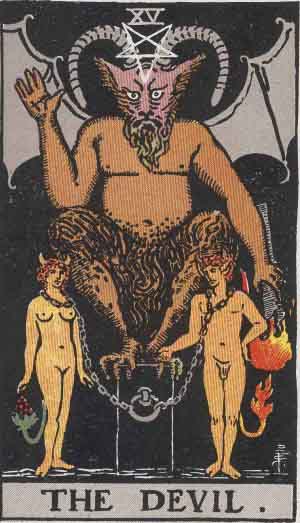
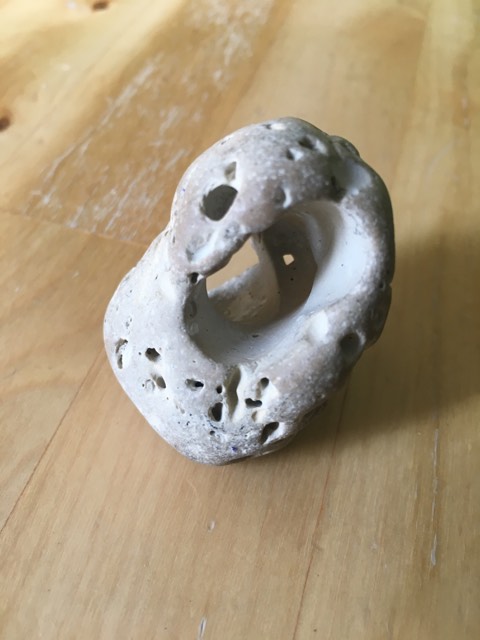

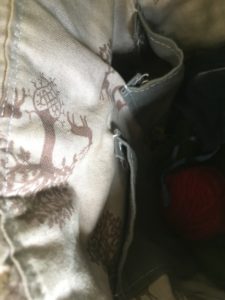
 middle of them, and although I haven’t really found good scholarship on them, my experience has been that these are both effective tools and apotropaics. They’re protective against the Unseen, and allow you – again, in my experience – to see through glamours and things that are normally unseen if you look through them.
middle of them, and although I haven’t really found good scholarship on them, my experience has been that these are both effective tools and apotropaics. They’re protective against the Unseen, and allow you – again, in my experience – to see through glamours and things that are normally unseen if you look through them. general because it has so many uses. You can use it to salt boundaries, protect, and banish. But black salt is just taking regular old salt and leveling it the fuck up! The addition of iron, ash, and (in my case) ground wolf bone, makes black salt an excellent addition to a go-bag. It’s like an apotropaic powerhouse!
general because it has so many uses. You can use it to salt boundaries, protect, and banish. But black salt is just taking regular old salt and leveling it the fuck up! The addition of iron, ash, and (in my case) ground wolf bone, makes black salt an excellent addition to a go-bag. It’s like an apotropaic powerhouse! energy that might “grow up” to get its own ideas and start its own trouble. Spun fiber can provide a bridge, delineate space, and serve as an offering in its own right. I have two spindles that I typically use in ritual work: one is a collapsible spindle that fits in my bag; and the other,
energy that might “grow up” to get its own ideas and start its own trouble. Spun fiber can provide a bridge, delineate space, and serve as an offering in its own right. I have two spindles that I typically use in ritual work: one is a collapsible spindle that fits in my bag; and the other, 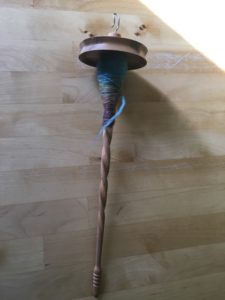 my large one, was a gift to thank me for help given. I adore my large one because it feels weighty and authoritative – like a wand. It’s something I’ve wielded in ritual before now when opening portals and working my will. The collapsible one lives in my purse (yes, it’s that small) along with the sheep knuckle I use for yes/no divination.
my large one, was a gift to thank me for help given. I adore my large one because it feels weighty and authoritative – like a wand. It’s something I’ve wielded in ritual before now when opening portals and working my will. The collapsible one lives in my purse (yes, it’s that small) along with the sheep knuckle I use for yes/no divination. resonance to this item that just works. I’ve engraved it with words of power (which I won’t show here), and it’s one of my favorite spirit weapons for subduing, setting up some hardcore protective space, or for when things go bad. I don’t know whether it’s wholly iron or steel (which is mostly iron anyway), but it’s kickass anyway.
resonance to this item that just works. I’ve engraved it with words of power (which I won’t show here), and it’s one of my favorite spirit weapons for subduing, setting up some hardcore protective space, or for when things go bad. I don’t know whether it’s wholly iron or steel (which is mostly iron anyway), but it’s kickass anyway. This is one of my more McGyver-type items. Red thread can be used to bind and protect, or create new items (like a crossroads effigy or protective rowan cross). It can also be used for knot spells, marking off space, and much more. The yarn I use is hand spun with intent and then ritually consecrated.
This is one of my more McGyver-type items. Red thread can be used to bind and protect, or create new items (like a crossroads effigy or protective rowan cross). It can also be used for knot spells, marking off space, and much more. The yarn I use is hand spun with intent and then ritually consecrated.


 entice you into some kind of oath, your first move is always research. Go find out everything you can about them, and if it’s not available in physical sources, go pester allies for more information. Because there are a whole bunch of things you need to know here. For example, you need to know their MO; if they’re presenting themselves as they actually are; how others have fared dealing with them; and if they have a GSOH and enjoy long walks on the beach at sunset. Because all of that will not only help you figure out *who* you’re dealing with, but also help you better word any oaths you make so that you can do stuff like insert more protective clauses (which is #winning, trust me).
entice you into some kind of oath, your first move is always research. Go find out everything you can about them, and if it’s not available in physical sources, go pester allies for more information. Because there are a whole bunch of things you need to know here. For example, you need to know their MO; if they’re presenting themselves as they actually are; how others have fared dealing with them; and if they have a GSOH and enjoy long walks on the beach at sunset. Because all of that will not only help you figure out *who* you’re dealing with, but also help you better word any oaths you make so that you can do stuff like insert more protective clauses (which is #winning, trust me).

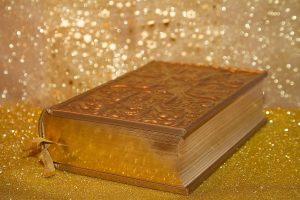

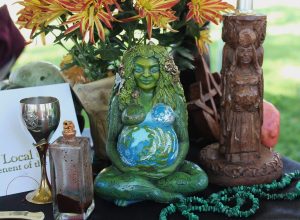 accordingly, as I do respect her). I do think she makes an excellent point about the duotheisms held dear by the earlier Pagan revivalists, and their incompatibility with both modern and ancient ideas on deity. But does that mean that we should once more throw out yet another baby with the water it was bathing in? (Which per
accordingly, as I do respect her). I do think she makes an excellent point about the duotheisms held dear by the earlier Pagan revivalists, and their incompatibility with both modern and ancient ideas on deity. But does that mean that we should once more throw out yet another baby with the water it was bathing in? (Which per  I shall go into a hare,
I shall go into a hare,

 respective worlds, our little treasures who never tire us or make us angry; friends of mine refer to this as ‘the cult of the child’. However, regardless of how much we love our children, we all *need* time to replenish ourselves, to do things that recharge the batteries we draw so deeply upon when dealing with the fifteenth tantrum of the day, or the horror of heavy-handed black crayon on carpet. Like the analogy of the parent putting their oxygen mask on before that of the child, if we don’t take care of ourselves, we can’t take care of them to the fullest of our abilities.
respective worlds, our little treasures who never tire us or make us angry; friends of mine refer to this as ‘the cult of the child’. However, regardless of how much we love our children, we all *need* time to replenish ourselves, to do things that recharge the batteries we draw so deeply upon when dealing with the fifteenth tantrum of the day, or the horror of heavy-handed black crayon on carpet. Like the analogy of the parent putting their oxygen mask on before that of the child, if we don’t take care of ourselves, we can’t take care of them to the fullest of our abilities.


 Everything feels so alive, there’s a buzz in the air, a rightness of place, and not for the first time I think to myself that this is what it must be like to put down roots somewhere.
Everything feels so alive, there’s a buzz in the air, a rightness of place, and not for the first time I think to myself that this is what it must be like to put down roots somewhere. moment you walk the boundaries with fire to take your land, you’re granted an agency in that place that you don’t have as a traveler. In your home, you get to create your cosmos, your inner-yard, your most holy of spaces instead of moving between the inner-yards of others and dodging the dangers of the outer-yard. You build reciprocal relationships with the wights in a way that you never did before, like the kind that neighbors make with neighbors who bought as opposed to those who rent. Wandering, liminal gods are joined by gods of ‘peace and good seasons’ in your hearth rites; and the magic you work is less because some scary ‘could kill you’ shit is going down, and more because your family needs a little extra help at times to continue thriving, or even simply just to keep your hand in.
moment you walk the boundaries with fire to take your land, you’re granted an agency in that place that you don’t have as a traveler. In your home, you get to create your cosmos, your inner-yard, your most holy of spaces instead of moving between the inner-yards of others and dodging the dangers of the outer-yard. You build reciprocal relationships with the wights in a way that you never did before, like the kind that neighbors make with neighbors who bought as opposed to those who rent. Wandering, liminal gods are joined by gods of ‘peace and good seasons’ in your hearth rites; and the magic you work is less because some scary ‘could kill you’ shit is going down, and more because your family needs a little extra help at times to continue thriving, or even simply just to keep your hand in.





 me. My first use of fiber arts for the sacred was embroidered pieces dedicated to deities, magical house protections incorporating the ALU charm, and shrines that could be folded away.
me. My first use of fiber arts for the sacred was embroidered pieces dedicated to deities, magical house protections incorporating the ALU charm, and shrines that could be folded away.






